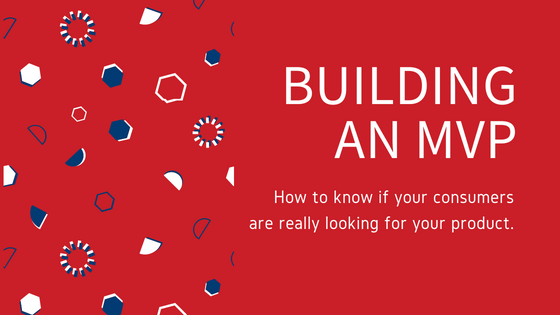
When you’re starting a business, it’s hard to know if the product or service you’re about to launch will actually be a hit. In those early stages you’re really putting all your time, effort, and funds into something you believe in, which is why it is so important to make sure that what you’re putting out there is what consumers are looking for.
In the past, on track with traditional business thinking, a person or company would be advised to simply do market and consumer research, including a SWOT analysis, to try and get a feel for what the future would bring once the product/service was launched. Then, what a company would usually do is gather that information and spend all their time and effort building the best product/service they could, to later launch it and track the market response. Though those are still very important and valuable steps, with the rise of startup culture and how fast everything is changing in the world, companies need to be able to test what their bringing to the table even before it is fully completed in order to identify as early as possible what works and what doesn’t and change what is necessary to keep on growing.
Enter the MVP – Minimum Viable Product
This concept was developed by Eric Ries after multiple frustrated experiences launching startups, and which he fully explains on his book “The Lean Startup”. Even though that is a great book, and we highly recommend it, on this and on the upcoming articles we’ll be taking you through the process of how to build an MVP in a simple and straightforward way so that you can start applying these concepts to your business as soon as possible.
An MVP is the most basic version of a new product, that can still be released, and which allows you or your team to collect the maximum amount of validated learning about customers with the least effort. It usually has these three characteristics:
In other words, this means being ready to accept that your consumer knows best and that you need their input in order to move forward and to grow your business. It also means that you will always have to manage to learn something from your first, as well as every single one of your product iterations. This will require you to spend your time and energy on talking to customers and on metrics and analytics.
Keep Focused
Something you’ll need to learn to focus on is a minimum set of features needed to learn from visionary early adopters. This will especially help you:
And it will also give you the validation you need that your long-term vision makes sense.
Another key factor is that your MVP is usually much smaller than you think. I’ll give you an example. Purple Carrot is a plant-based meal subscription service that sells their subscriptions through their website. After having launched their website they got feedback from customers who wanted to be able to gift the subscription to friends and family. From this, one might think the minimum viable product would be to build a gift giving page and program within the website, prep codes, emails, create graphics and so on, to then launch and gather more feedback, a process that could take weeks of work. However, in this situation they could run the risk of people not using the page/link – a lot of times customers will tell you they want something but when it comes down to them having to put an effort in to it, they’re not actually interested – and so all of their time, money and effort would have gone to waste and put them back at ground zero. Now, what if instead of going through all of this work, they simply created a “smoke” ad and a landing page promoting and offering the option of the gift subscription? This way they could easily track people’s real interest based on how many views and clicks they actually got. It would make for better use of their time and resources, it would cost last, and they would be able to learn early on what their next steps should be.
Ask yourself this question
“What is the minimum amount of work that we have to do in order to engage with those early adopter customers and start getting their feedback?”
With this, you should now have a better understanding of what is an MVP and what’s the mindset you need to have when approaching it. Next, we’ll help you understand the steps to build one successfully, which will consist of hypothesis, customer discovery, project specs, market strategy and tracking success.
Have you used this strategy in your business? Tell us what you think about it as well as some of your experiences in the comments below. I’m curious as to what are some questions you may have, as well as to what were some of the challenges and learning points in choosing this approach.



